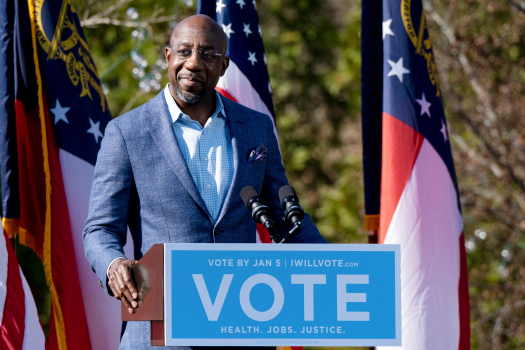After the November 3rd Election, Jon Ossoff (D), Rev. Raphael Warnock (D), Senator Kelly Loeffler (R) and Senator David Perdue (R) were all cast into a runoff election. This result gave Democrats hope that they could win the Senate. But, in a state that has historically remained red since the late 1990s such an outcome was highly unlikely. And so, the Democrats needed luck and ingenuity to flip Georgia.
This luck and creativity came in three different forms: Stacey Abrams, a new political strategy and President Donald Trump.
Stacey Abrams was key in bringing voters – specifically African Americans – to the polls. In Georgia, there had been widespread voter suppression, especially in the African American community. For example, hundreds of poll locations were closed and in African American communities poll locations were small and scarce. Furthermore, minority voters were blocked from registering to vote due to claims of screening, this resulted in Republicans maintaining control of Georgia, as one main opposing voter block could not vote. Stacey Abrams fought against this injustice and registered over 800,000 new voters in time for the election, which voted in support of the Democrats. Without these voters, and further registrations, the Democrat Senate candidates would have had no chance at winning the election.
The Democrat’s candidate’s self-characterization was very important to winning the election. Rev. Warnock and Jon Ossoff did not endlessly barrage their opponents based upon their affiliation with the president. Instead they focused on the policies and ideals that they would bring to Washington. The candidates highlighted clear and rational policy that would benefit most, if not all, Georgians. In turn, the selfish and arrogant characterization typical of politicians was nearly absent from their campaign. In contrast, their opponents were clearly amoral. Both Senator Loeffler and Senator Perdue made hundreds of stock trades, and increased their wealth dramatically during the pandemic. The Democrats were fortunate as there was a distinction between morality and corruption in the candidates.
But, even with these factors, the Democrats were helped by the Congressional instability created by the stimulus bill debates. In December, the congressional Democrats and congressional Republicans discussed a stimulus bill packed inside of an Omnibus bill. After weeks of debate, Congress agreed on a $900 billion dollar package, with $600 in stimulus checks for the American people. The bill was passed to Trump, who refused to sign it stating that the American people must be given $2,000 in stimulus checks. The Republican Party was against such a move. The Democrats pushed through a bill that would make sure the American people would obtain $2,000, but Senate Majority leader Mitch McConnell shot down the bill. In turn, the Democrat’s candidates campaigned for distributing $2,000 checks to the American people, a policy that nearly all citizen’s supported. The Democrats had a position that would help the Georgians, in contrast to the Republicans who had no wish to give more stimulus to America.
While it has been argued that the decreased Republican voter turnout would be the reason for the victory of the Democrats, this was clearly not the case. When examining the voter turnout between the presidential election and the congressional election, the number of voters is relatively the same. As such, one cannot say that voter turnout was the indicator for the Democrat’s victory. Rather, it was a combination of political skill, timing, and the desire to finally address the disenfranchisement of Black voters in Georgia.

